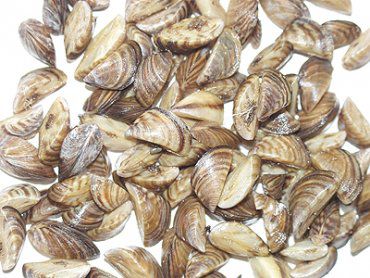A small, high-mountain lake in southeastern Utah is the first body of water in Utah to test positive for zebra mussels. The Division of Wildlife Resources announced Nov. 18 that zebra mussel DNA has been found in water samples taken from Electric Lake.
Electric Lake is in Emery County. The lake is the headwater of the Huntington River. It’s also the water source for Rocky Mountain Power’s Huntington electric generation plant and the primary source of water for the Huntington-Cleveland Irrigation Company.
“These mussels will harm the lake’s fishery,” says Larry Dalton, aquatic invasive species coordinator for the DWR. “They also have the potential to damage the electric generation plant and the irrigation systems by plugging up their pipes.”
The DWR and its partners worked diligently to keep quagga and zebra mussels out of Utah during the 2008 boating season. Early-detection monitoring was part of that effort. After sampling water in lakes and reservoirs statewide, the DWR sent 54 samples to an independent lab for microscopic analysis. Preliminary test results indicated several waters might contain microscopic veligers, which are the early-life stages of zebra and quagga mussels.
Electric Lake is the first Utah water where results from tests done under a microscope have also been confirmed by two different DNA tests. The labs are still performing DNA tests on the other suspicious waters.
“The DNA tests the labs are doing are on the cutting edge of science,” Dalton says. “In addition to providing the test results, we’ll do our best to keep people informed about how the science is changing.”
Efforts in 2008 included: During the 2008 boating season, DWR biologists contacted more than 50,000 boat owners to learn if they had been boating on a water outside of Utah that had quagga or zebra mussels in it. If they had, the biologists then questioned them to learn whether their boat had been properly decontaminated.
DWR biologists and their partners decontaminated about 800 boats after learning the boats had not been decontaminated properly.
Typically, quagga and zebra mussels travel from one body of water to another on boats and equipment used by recreational boaters and anglers. They also travel through water distribution systems. For boaters, there are two fairly simple decontamination options: do-it-yourself decontamination or professional decontamination. To protect Utah’s waters from quagga and zebra mussels, Utah boaters must make the following practices a routine part of their boating experience: Complete all three of the following steps to decontaminate your boat and equipment: Clean all plants, fish, mussels and mud from your boat or equipment before leaving the water body area (discard unused bait in the trash where you fished). Drain all water from your boat (equipment storage areas, ballast tanks, bilge, live wells and motor) before leaving the water body area. Dry your boat and equipment at home or in a suitable storage area before you launch it again. (Drying times are a minimum of seven days in the summer, 18 days in the spring and fall, and 30 days in the winter. Temperatures that stay below 32 degrees for at least three consecutive days will also kill the mussels on your boat or equipment.)
Contact a professional to apply scalding water (140 degrees Fahrenheit) to your equipment, boat and trailer. Make sure the professional flushes your boat’s equipment storage areas, ballast tanks, bilge, live wells and motor or other raw-water circulation systems.
Either of the above decontamination methods will kill both quagga and zebra mussels. They will also kill other aquatic invasive species that pose a serious threat to Utah’s ecosystems.
A single zebra or quagga mussel breeding pair can produce 1 million young in a single breeding season.
Adults are about the size of your thumbnail (15-20 mm), surviving for three-seven years.
In the lower Colorado River, mussels can grow one millimeter each month. They’re capable of breeding when they reach four millimeters in size, which is about the size of a sunflower seed.
Impacts of zebra and quagga mussels
Industry:
Electric generation plants: Mussels can completely plug pipes in water circulation systems; cause headgates on dams to become too heavy to lift; and cause water control structures to malfunction by fouling the tracks the structures move on.
Irrigation systems:
Mussels can completely plug irrigation pipes; reduce the flow in canals; and affect irrigation control structures so they won’t regulate water.
Recreation:
Fishing: Mussels filter zooplankton out of the water. Zooplankton is an important food for fish.
Boating:
Mussels can plug the water circulation systems in your boat, which can ruin the engine.
Decreased enjoyment:
Millions of mussels can grow in an infested water.
When mussels die, they smell bad. Their sharp shells can also line the beaches and make walking bare-foot difficult.
Evidence of zebra mussels in Electric Lake

"Evidence of Zebra Mussels has been found in Electric Lake."
